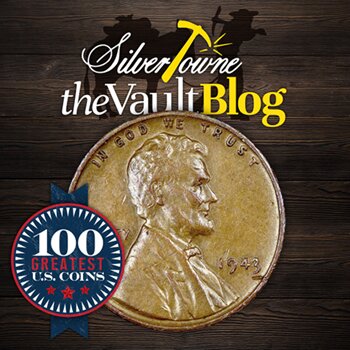
When you think about some of the greatest coin rarities of the 20th century, there are a few that might race through your mind at first. The kind of rare we are talking about specifically often refers to their mintages. For example, the 1909-S V.D.B. Lincoln Cent is limited to 484,000. It seems like a lot, but when you think about the fact that the same 1909 V.D.B. Lincoln Cent from Philadelphia has a mintage of nearly 28 million, it is just a drop in the bucket. Some more rarities? How about the 1916-D Mercury Dime that was limited to 264,000, the 1921-P Walking Liberty Half dollar that was limited to 246,000, or the 1907 $10 Gold Indian with Periods and a Wire Rim that had a whopping mintage of just 500. These are just some of the rarities that have graced the numismatic hobby in the modern age.
While a mintage of 500 is INCREDIBLY low, how about a coin that’s mintage is described as ‘a handful’? While just one spot shy of the top 10, we will continue our series breakdown of the top 100 Greatest United States Coins as published in Whitman Publishing’s fourth edition of the series talking about a coin that technically does not have a mintage because yes, it is that much of a mystery. With help from author Jeff Garrett in addition to Ron Guth, we will rummage through what we do know about this wartime coin and just how big a discovery it really would be in today’s numismatic climate.
#11 - 1943 Bronze Lincoln Cent
War across seas took its toll on the United States in the early 1940s. Wartime efforts were being made across the country to aid in the involvement and one of them was switching to steel in the production of cent coins as copper was being conserved. In 1943, the United States Mint produced over a billion “steelies” that were struck across three different mints, but somehow a critical error was made during this production. Mistakenly, a handful of 1943 cents were struck on an old bronze blank.
How did this happen? It can only be assumed previous bronze planchets were mixed in with new steel planchets and went through the run-of-the-mill striking efforts. However, these bronze planchets also made their way into circulation which brings into question the Mint’s quality control at the time. The Mint did not own their mistakes which happens to be quite ironic due to the fact that the Chief Engraver at the time owned a 1943 bronze penny. It took until the 1960s for their “policy” to ease when it came to admitting their error and they now recognize the escape of the 1943 bronze cents as a possibility.
While a “handful'' escaped, it can only be assumed that very few, if no one at all, realized the existence of the error penny initially. While it was recorded that the first one to be found occurred in 1947, the discovery of one being found in 1944 made headlines. Authentication was difficult during that early time frame causing one to believe that is why the family of the founder held onto it for more than 60 years. That coin sold for more than $100,000 in 2008.
While the rarity of the coin brings great attention to the hobby, some of the coin dealers used the situation as a marketing ploy by offering big rewards for the finding of one of the 1943 Bronze Lincoln cents. By doing this they brought attention to themselves while knowing they would most likely never have to pay up as the coins were that rare. Another effect of the rarity of the bronze penny is that collectors are often convinced that they have a genuine example when entering a coin shop. It turns out, a lot of the steel cents made in 1943 have been copper-plated and made to look like real bronze pennies. This makes it tougher for coin dealers to explain to customers when they may not know just how rare the coins in question are. However, the call to find one of these coins brought in a lot of new collectors to the hobby.
In 1960, a 1943 Bronze Lincoln Cent brought $5,000 in an Extremely Fine condition. By 1980, it had risen to $20,000. According to the last edition published in 2015, that coin may bring $200,000 or more.







